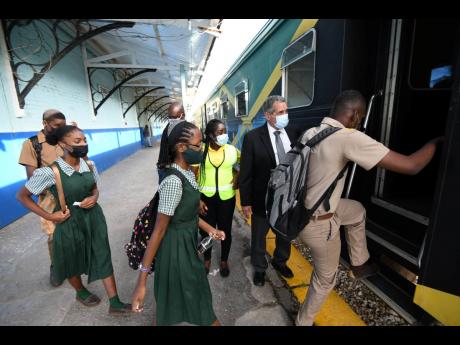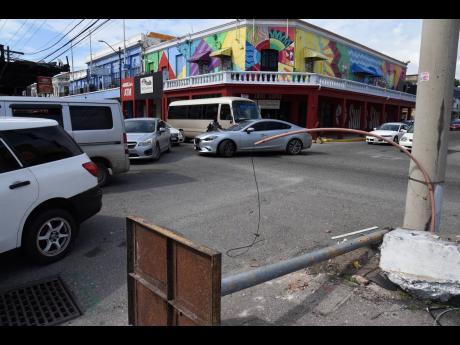Don’t get trapped on the tracks
The trains are back. Well, in the St Catherine area, at least for now, transporting students to Spanish Town and back. However, with the rolling out of the trains, care must be exercised when crossing the tracks. A railroad crossing is a very dangerous kind of intersection. “Crossing railway tracks safely is the responsibility of a defensive driver,” says Norris Christian, an accredited driver trainer. Defensive driving is all about saving lives, time, and money. It should be noted that wishing or hoping cannot stop a train suddenly if a motor vehicle is in the way.
Often, drivers cross the same tracks day after day and see only an occasional train. However, it is quite easy for drivers to forget that crossing these tracks can be a source of danger. Railroad crossings are almost always marked. Some have large white Xs painted on the road, near the crossing. Most crossings have a round, yellow warning sign. Let us focus on the controlled crossings and the uncontrolled crossings.
Controlled crossings have red lights, crossing gates, or stop signs to warn drivers. Experts suggest that a large per cent of fatal crossing collisions take place at controlled crossings. Drivers are, therefore, advised to apply the following rules to the different kinds of controlled crossings.
1. Flashing red light: When the lights are flashing, make a complete stop. Proceed only if the tacks are clear.
2. Crossing gate: When the gate is down, a driver should stop and remain stopped until the gate is raised. Even if no train is visible , it is unwise to drive around the gate.
3. Stop sign: For the STOP sign, a full stop is always required. Proceed only if the tracks are clear.
For the uncontrolled crossings: Many railway crossings are uncontrolled. They do not have lights, gates, or stop signs. However, most of the crossings are marked with a crossbuck, a large, white X-shaped sign, and a round yellow sign. Here are a few railroad crossing procedures:
When approaching railroad crossings, remember that the train always has the right of way. Drivers should take the following actions at a crossing:
Action 1: At the round warning sign, check the road surface, view each side and traffic to the rear.
Action 2: Turn off the radio and air conditioner to listen for the train. Also refrain from talking on the cell phone or looking for something on the floor.
Action 3: Reduce the speed to match traction and sight distance. The shorter the sight distance, the lower one’s speed must be. At night, switch your light to high beam to see if the train is on the crossing. Be prepared to stop if necessary.
Action 4: Obey signs and signals at controlled crossings.
Action 5: To drive across, keep your speed up to at least 10mph (16km/h) so you can roll across the tracks, if your engine should stall.
Action 6: With a manual vehicle, shift to a lower gear before starting to cross to prevent stalling on the tracks.
Action 7: If a line of cars is crossing, do not enter the crossing until the car ahead has left enough space, or room, for your car, otherwise, you may be trapped on the tracks with a train coming.
Action 8: Never cross after the train has just passed. Only move until you are sure the crossing is clear both ways. Another train, hidden by the first, may be coming on another track.



